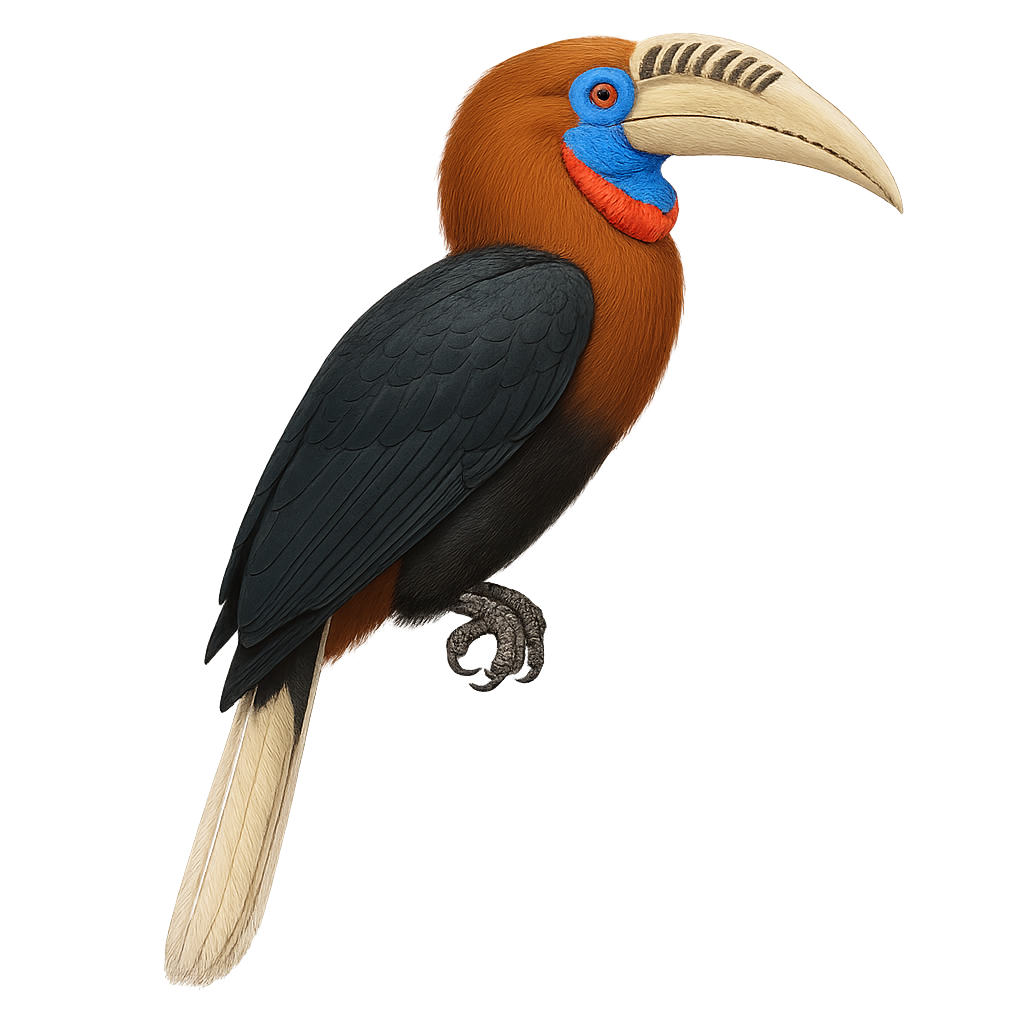Your wildlife photography guide.
Explore the rufous-necked hornbill in detail, study its behavior, prepare your shots.
Where to observe and photograph the rufous-necked hornbill in the wild
Learn where and when to spot the rufous-necked hornbill in the wild, how to identify the species based on distinctive features, and what natural environments it inhabits. The WildlifePhotographer app offers tailored photography tips that reflect the rufous-necked hornbill’s behavior, helping you capture better wildlife images. Explore the full species profile for key information including description, habitat, active periods, and approach techniques.
Rufous-necked Hornbill
Scientific name: Aceros nipalensis

IUCN Status: Vulnerable
Family: BUCEROTIDAE
Group: Birds
Sensitivity to human approach: Suspicious
Minimum approach distance: 10 m
Courtship display: March to May
Incubation: 38-40 jours
Hatchings: April to June
Habitat:
Tropical forests, subtropical forests, moist forests
Activity period :
Primarily active during the day, with peak activity in the morning and late afternoon.
Identification and description:
The Rufous-necked Hornbill, Aceros nipalensis, is a majestic bird found in the forests of Southeast Asia. It is distinguished by its glossy black plumage, rufous neck, and prominent casque. This casque, atop its beak, is a hollow structure that aids in the resonance of its calls. Males and females exhibit differences in size and coloration, with males generally being larger and more vividly colored. Arboreal in nature, it primarily feeds on fruits but also consumes insects and small vertebrates. Its natural habitat is threatened by deforestation, impacting its populations. Conservation efforts are crucial for its survival.
Recommended lens:
400mm – adjust based on distance, desired framing (portrait or habitat), and approach conditions.
Photography tips:
To photograph the Rufous-necked Hornbill, it is advisable to use a telephoto lens of at least 400mm to capture detailed images without disturbing the bird. Look for areas of the forest where these birds are known to feed, usually early in the morning or late afternoon. Be patient and discreet, as these birds can be suspicious. Use a tripod to stabilize your camera and adjust your settings for low light conditions under the dense canopy.
The WildlifePhotographer App is coming soon!
Be the first to explore the best nature spots, track rutting seasons, log your observations, and observe more wildlife.
Already 1 430 wildlife lovers subscribed worldwide

